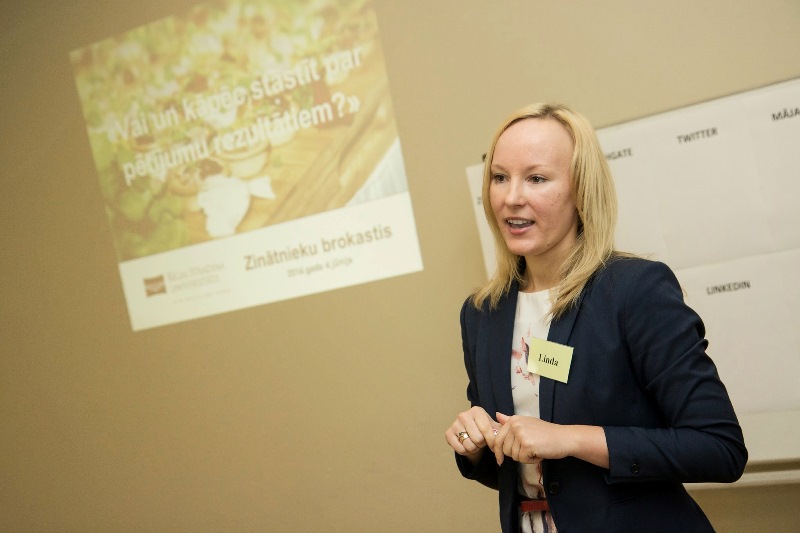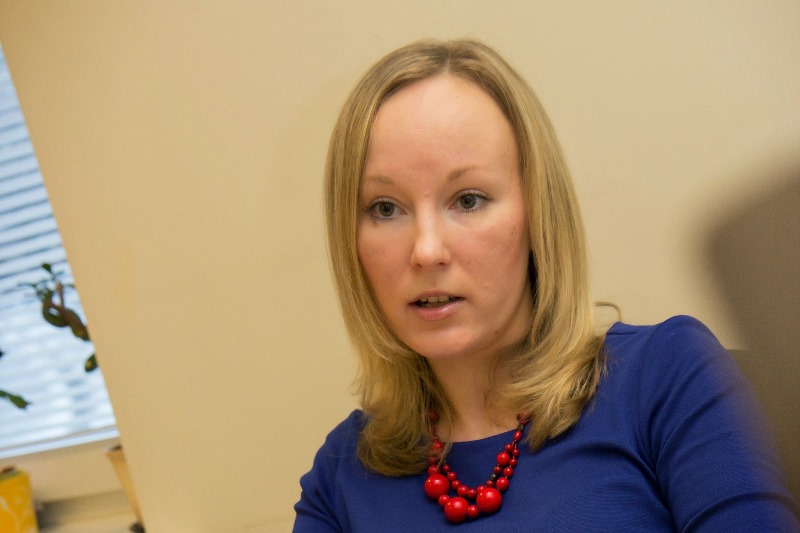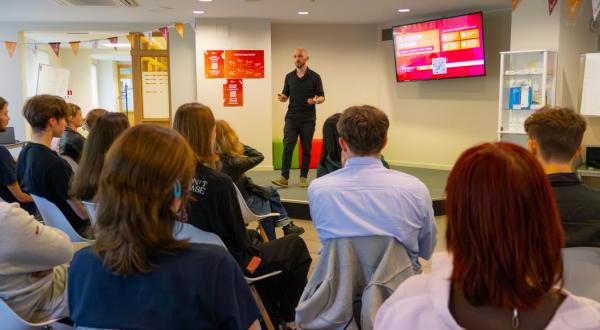Technology Transfer Office – an integral part of the university
We have recently interviewed Linda Gabrusenoka (pictured), Head of the Technology Transfer Office of Rīga Stradiņš University, on the operations of the office, accomplishments and planned works.

The Technology Transfer Office was established in 2008. What does this RSU structural unit deal with?
The main activities of the Technology Transfer Office can be divided into four large directions.
The first direction involves raising the knowledge of RSU scientists in such issues as protection of intellectual rights, patenting, commercialisation, promoting cooperation with entrepreneurs etc. We organise seminars and training for our scientists, visit scientific structural units of RSU and tell them about our what we offer, as well as the provision of individual consultations.
The second direction of operation is scientific marketing – this involves various activities for raising the recognition of structural units of RSU and their scientific studies, achievements, developments and services. We post information on the RSU homepage, prepare various informative materials, participate in professional exhibitions or business forums etc.
The third area of operation is the implementation of an intellectual property management policy of RSU. This means keeping up with the development of intellectual property or registered patents, understanding what goes on with them and whether any potential commercial projects are developing, where we could generate income. Of course, this also involves development and support of such projects within the extent of our capabilities.
The fourth direction of development, which serves as a result of all the previously mentioned ones, is various technology transfers and commercialisation activities. These activities involve supervision and implementation of contract research processes, which include determination of price for our scientific services, conclusion of contracts with customers, and attraction of appropriate contractors for each particular contractual research. Later, we make sure the work is done and customers make their payments. In other words, we facilitate the bureaucratic-administrative process of contract research for scientists, so that they can do their research work – execution of orders. We also undertake promotion, development and attraction of funding for commercial projects, so that various research developments can be promoted on the market.
Can it be said that such a structural unit – the Technology Transfer Office – is an integral part of a modern university?
Yes, all universities of technologies and natural sciences should have such centres of innovation and commercialisation with their basic function being the promotion of the commercialisation of scientific developments. It is not a new trend anymore, as such centres in Europe and elsewhere in the world have existed for several decades now, although in Latvia it is a relatively new area of operation.
How do the scientific achievements of RSU look in the context of science in Latvia?
The scientific achievements of RSU in the overall context of Latvia look very good, especially, if we assess scientific results per one scientific staff full-time equivalent. For example, one of the results of scientific operation is the number of publications, and in the previous year there were more than 130 publications published in editions with a high quoting index, included in international databases. It is a very high indicator. Each year on average we register 8–10 new patents. It may seem that this number is small, however, one should take into account that all patents represent medicine or pharmacy sectors where the development cycle of products is much longer than in other sectors, it can reach even 15 years, thereby, their development stage is much longer.
The number and amount of contract research grows each year. There are several products, created as a result of scientific studies that are already available on the market. For example, the main achievement in recent years is the preparation of Glycomune which was developed in the Institute of Microbiology and Virology and is an immune modulator made from natural ingredients, and now it can be obtained in pharmacies.
The sour milk product “Labdaris” enriched with lactic acid bacteria has been available on the market for a long time. This product has shown very good results in clinical studies – it facilitates stabilisation of the intestinal tract in the post-surgery period. Fitesten – a preparation for the improvement of gastrointestinal tract health, which has been developed by specialists of the Department of Dosage Form Technology in cooperation with entrepreneurs – can be mentioned as another product.
Do we have scientific developments and cooperation projects also at an international level?
In terms of the development and promotion of commercial projects at an international level, currently, we are at the initial stage, there is still much to do. However, I have to say that our scientists are able to attract international funding for their projects. The 7th Framework Programme, Horizon 2020 programme, Norwegian financial instruments and other sources of funding can be mentioned as examples. This shows that our scientists have achieved international recognition and contacts, cooperation is progressing and there is a potential to develop new, competitive research and development projects.

What are the future plans of the Technology Transfer Office?
One of the greatest challenges in the nearest future will be the arrangement and development of the licensing process – how we transfer our scientific developments to potential licentiates, how we conclude these agreements.
Nowadays, also in various applied research support programmes, standards are integrated, which stipulates that scientific institutions that are implementing these projects, shall undertake commercialisation of respective developments, for example, by concluding licence agreements on transfer of rights for using the intellectual property to the merchant.
Also RSU has three developments, research work which was financed from funds of the European Regional Development Fund and which should be commercialised within 3 to 5 years. These developments have great potential. One of them is a veterinary medicine product – a preparation for mastitis treatment and prevention for cows, which can substitute antibiotic therapy, also improving the quality of milk and reducing losses for milk manufacturers. This preparation was developed by scientists of the RSU A. Kirhenšteins Institute of Microbiology and Virology.
A genetic test for determining infertility was developed at the RSU Scientific Laboratory of Molecular Genetics. A novelty is that this test includes 30 most frequently detected genetic mutations which cause infertility among men and women.
The third product is developed in dermatology – a lotion made from natural ingredients for patients suffering from metabolic syndrome. This lotion regenerates the protective function of skin, reduces skin dryness and increases its elasticity.
A huge challenge will be finding interested companies for further development, manufacturing and promotion of these products on the market.
This academic year RSU celebrates its 65th anniversary. What do you wish for RSU regarding future development?
Certainly – not to lose the current course of development, to set sufficiently ambitious goals and keep on track. We have already proved ourselves as a highly competitive university, and we just have to move forward.
Related news
 Develop your business skills and bring ideas to life with the B-Space incubation programmeFor RSU Employees, For High School Students, For Students, Innovation
Develop your business skills and bring ideas to life with the B-Space incubation programmeFor RSU Employees, For High School Students, For Students, Innovation


